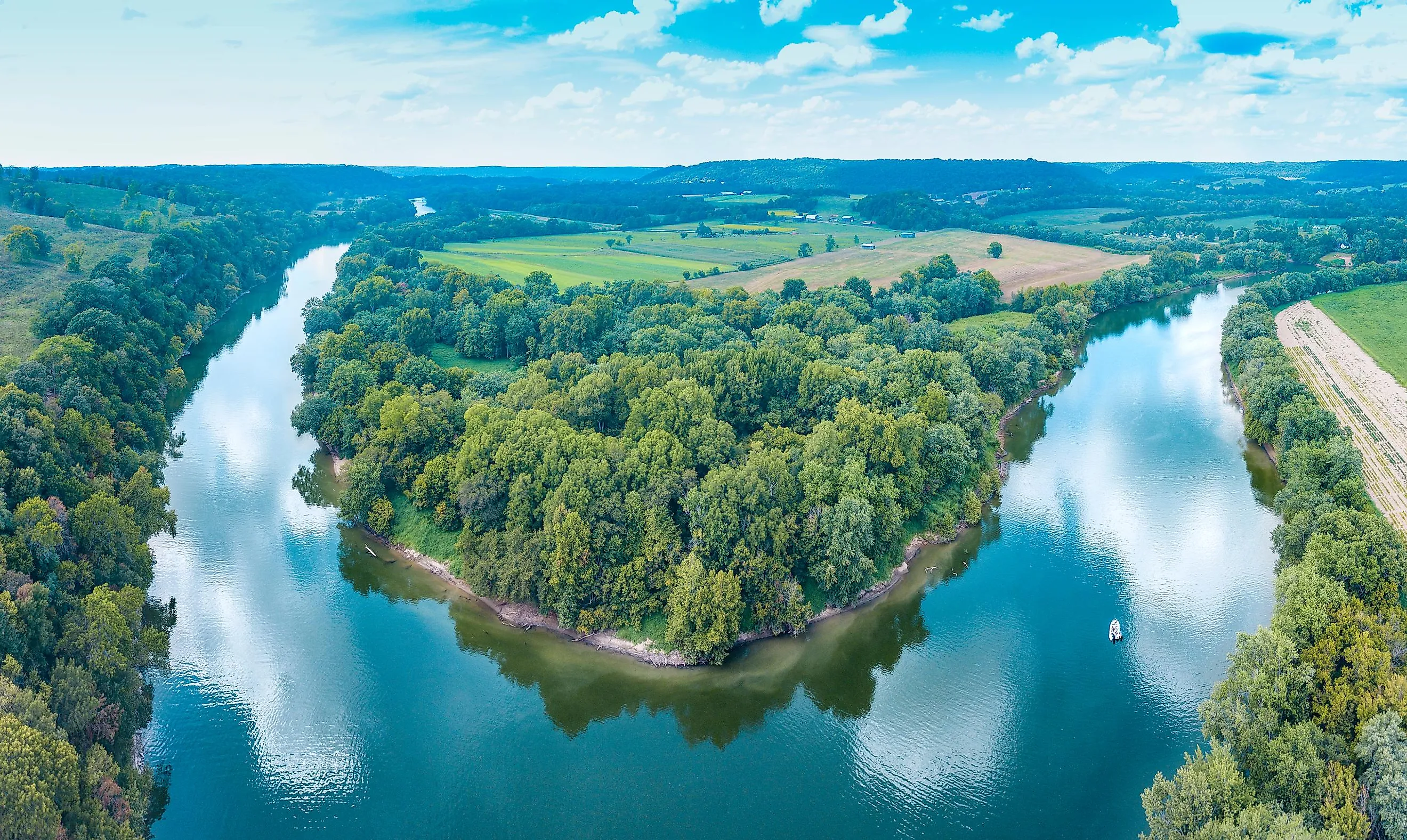
Kentucky River
Located, as the name suggests, primarily in the American state of Kentucky, the Kentucky River is 255 miles long. This river is 45 feet deep at its deepest point and at its shallowest, 10 feet deep. While many attribute the colonial discovery of the Kentucky River to none other than Daniel Boone in 1769, it is more likely to have been navigated by frontiersman Christopher Gist in 1751 while he was on a mapping voyage down the Ohio River. Today, the Kentucky River provides water to 700,000 people, as well as a wide range of agricultural lands.
Source
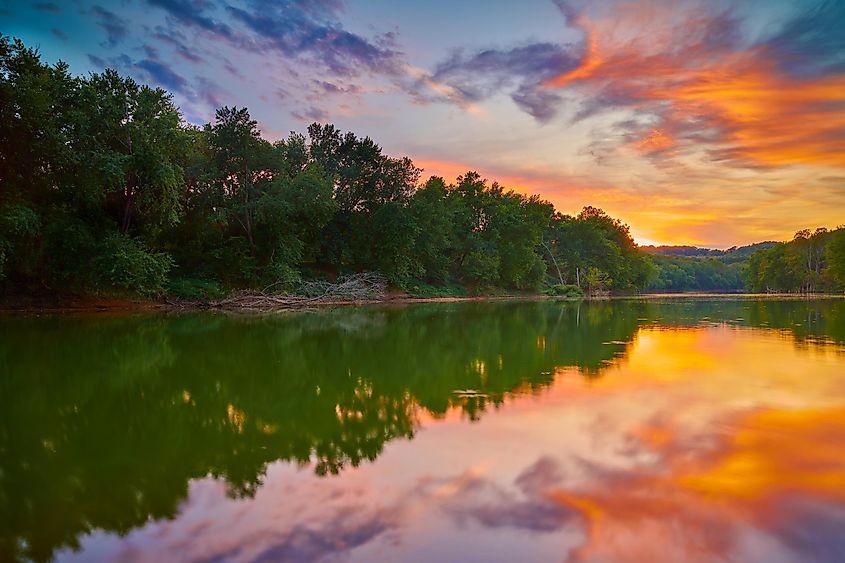
The headwaters of the Kentucky River are fed by the runoff of Pine Mountain in southeastern Kentucky, in the Cumberland Plateau region. The Kentucky River originates as three smaller branches that merge near Beattyville, Kentucky, at which point the river widens and deepens. The watershed of the Kentucky River is 7,000 square miles along the course of the river. Smaller rivers and streams also feed the Kentucky River, of which Elkhorn Creek is the largest. The Kentucky River flows in a northwestern direction through the Knobs and Bluegrass regions of Kentucky.
The Course Of The Kentucky River
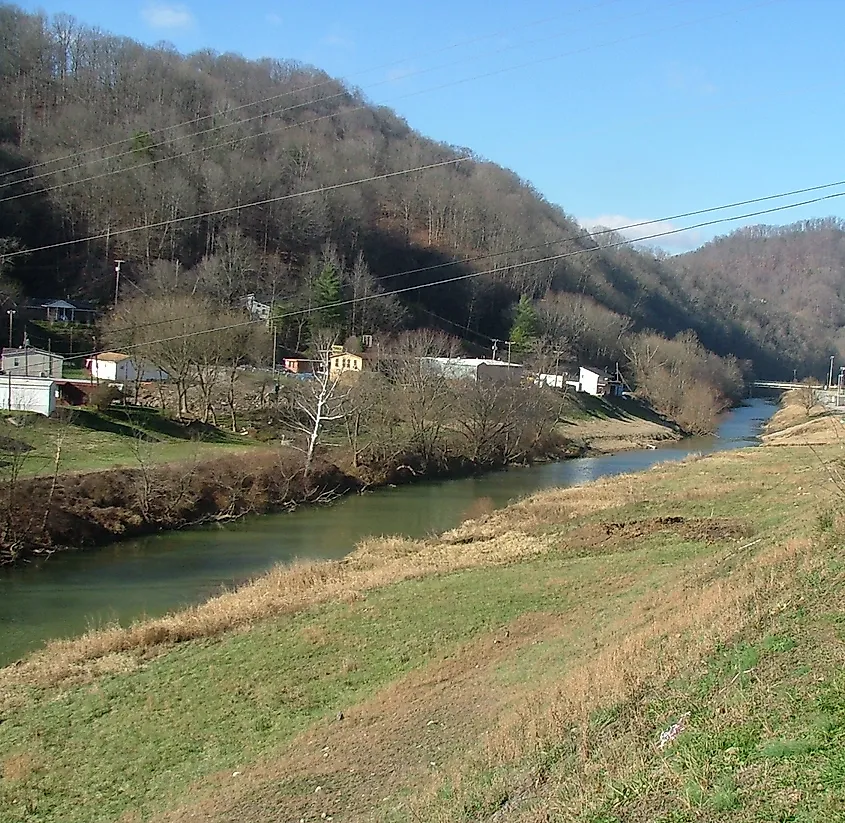
The Kentucky River is comprised of three sections: the North Fork, the South Fork, and the Middle Fork. The North Fork is 168 miles long, flowing from Letcher County to the Breathitt County/Lee County line, where it merges with the Middle Fork. The Middle Fork is 105 miles long, originating in Leslie County. This portion of the Kentucky River flows north until it reaches the region around Hayden, Kentucky. The shortest of the three forks, South Fork, is 45 miles long, originating in Clay County, near Oneida, Kentucky, in Daniel Boone National Forest. Goose Creek and the Red Bird River feed this fork of the Kentucky River.
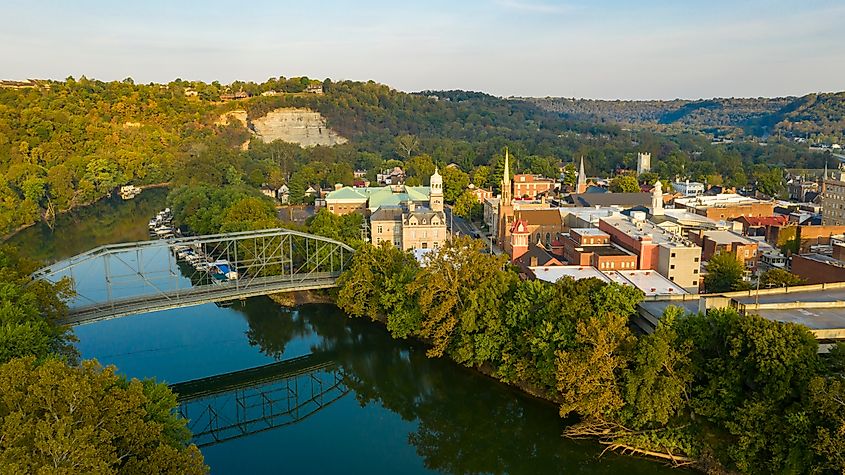
The Kentucky River is characterized by its rambling nature, with many twists and turns and spots with low water flow, all of which make it a difficult river to navigate by watercraft. This, combined with the river's many sandbars and other snags, made it dangerous enough that locks and dams were built to increase the river's flow in the southern portion, from Beattyville to where the Kentucky River meets the Ohio River. Along the entire course of the Kentucky River, there are a total of 25 crossing points, the first of which, the Camp Nelson Bridge, was designed by Lewis V. Wernwag and built in 1838, although this bridge is no longer in use for safety reasons.
Along the course of the Kentucky, there are 14 locks, the first built in the mid-1800s. Today, only locks 5 to 14 are still in use. The Kentucky River has three large reservoirs: Cave Run Lake, Laurel River Lake, and Lake Cumberland. The Kentucky River terminates at the Ohio River near Carrollton, Kentucky.
Climate And Hydrology
The Kentucky River is a freshwater river supporting the lush ecosystem of eastern Kentucky. Its slow current allows for species to use the river as a safe source of water. The Kentucky River also feeds many smaller streams and creeks, making it important to both plants and animals in the region. The climate around the Kentucky River, this being primarily the eastern portion of the state of Kentucky, gets on average 40 to 50 inches of precipitation annually, mostly as rainfall. The region is prone to flooding, with significant recent floods having occurred in 1977 and 2010.
Flora And Fauna
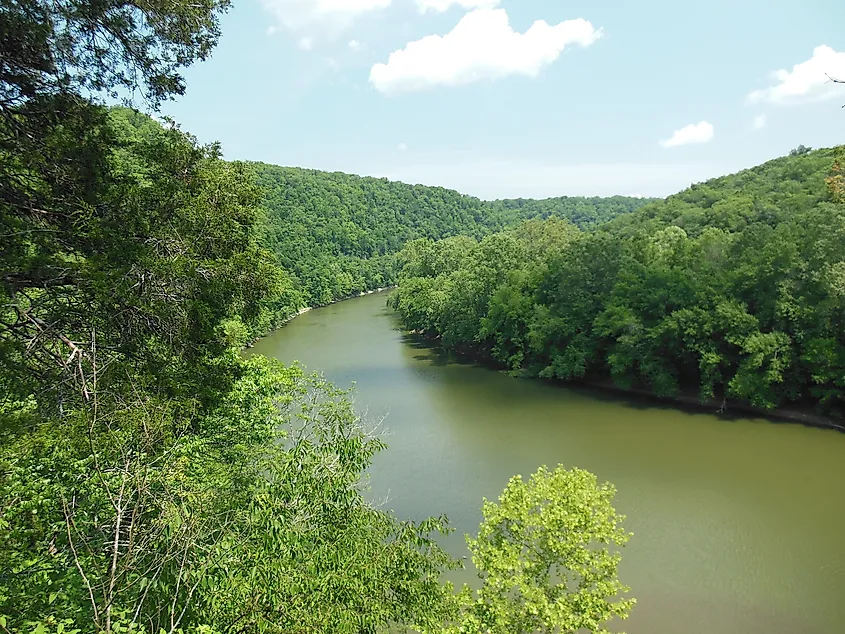
Much of the forestlands bordering the Kentucky River are classed as oak-hickory forests. In this type of forest, red maple trees are most abundant at almost 15% of these forests made up of this species. Although there are no endangered or vulnerable species that make the Kentucky River, and its terrestrial borders, their home, there are more than 226 plant species documented, as well as 88 bird species, 40 fish species, 12 mammal species, 17 amphibian species, and 12 reptile species that are found in and around the Kentucky River. Natural plant species in this region have been decimated to a large degree by exotic species, including garlic mustard, henbit, chickweed, honeysuckle, privet, and stilt grass, each of which was introduced to the Kentucky River region by colonial intervention.
Importance Of The Kentucky River
In the early years of colonization, the Kentucky River was used by barges transporting resources, such as timber, tobacco, and hemp, as well as by passenger vessels. While the Kentucky River was an important part of Kentucky's economy for over a century and a half, its modern use is now primarily recreational, with its economic use beginning to decline by the early 1950s due to the indirect nature of this river. Other transportation methods became faster and less expensive, ending the industrial function of the Kentucky River.











